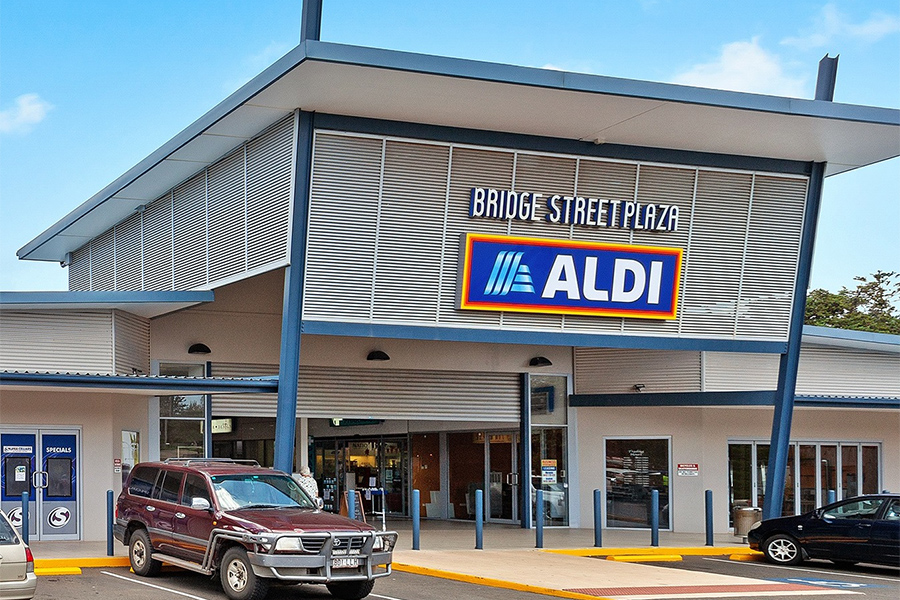See Angus McNaughton speaking at the Big Guns lunch – video below
Despite the tumultuous global and domestic political and economic circumstances, I am nevertheless confident that the shopping centre sector will continue to prosper in 2016.
This view reflects the fundamental strength of the sector. As a general rule it is well managed, and is substantially owned by investors with medium-to long-term investment horizons, such as large institutions and superannuation funds. The sector has high and stable occupancy levels, in an economy that is still producing steady, albeit modest, growth.
The sector is also well funded, balance sheet settings are conservative and the yields from the sector are attractive. Therefore it is likely to continue to enjoy investor support.
However, no one could be criticised for being cautious about predicting the potential path of markets and economic activity during 2016. It has been an extraordinary start to the year, with markets around the world falling heavily and some commentators, such as Royal Bank of Scotland, issuing dire warnings to “sell nearly everything.”
Of course, there are opposing and less dramatic views from other highly credible commentators who have more confidence in the potential for 2016. For example, both the Chair of the United States Federal Reserve, Janet Yellen, and our own central bank head, Glenn Stevens, recently indicated they expect global growth to continue, although at somewhat subdued levels. We do not seem to be heading for an ‘end of the world’ economic scenario from their perspective.
Apart from the debate about economic activity and equity market volatility, 2016 has to cope with a range of ongoing social and political tensions. The oil price, while driven by falling demand due to slower world growth, is also hostage to the non-demand related actions of existing suppliers that have been attempting to meet the competition created by the emergence of US shale oil as a significant supply source, as well as the re-entry of Iran to global markets.
In addition, North Korea has added to global tensions with a nuclear test, and China has not only upset markets with slowing economic growth figures but has also been flexing its military muscles in the South China Sea.
The massive dislocation in Europe in particular, but across the globe generally, as refugees flee from conflict zones in Syria and Iraq, is an enormous humanitarian tragedy but also constitutes a hard-to-measure influence on investment confidence and economies. The associated terrorism events, which cause a devastating impact on the lives of those involved, also creates uncertainty for markets.
In Australia, we are headed toward an election sometime this year, and election years are generally typified by a degree of uncertainty among consumers and business. With taxation and spending reforms expected to be key issues in there will be the coming election, it is guaranteed some concerns and caution.
Internationally, the US is also headed towards an important election that has the potential to dramatically alter the policies of that important global power.
So, given this litany of issues, why do I remain confident? For a start, it is rare for any set of economic and political circumstances to be uniformly negative for all components of the economy. Within the current set of concerns there are some silver linings, and several of these situations work in favour of the retail sector.
For the retail sector, a crucial issue is consumer confidence. While there is no doubt consumer sentiment can be fickle, and changes quickly, consumer confidence has been mildly positive for several months, in spite of all the negative influences and concerns.
Obviously, the strong state of the housing market in Sydney and Melbourne in particular, and recovery in equity markets in the years since the Global Financial Crisis, has helped improve consumer confidence and reduce the tendency to be cautious with personal finances.
Recent market volatility will have undone some of this progress, but it is still not all bad news for consumers. Employment in Australia has remained stable, with the unemployment level recently dropping slightly to less than 6%. This is a key element for consumer confidence, and lower oil prices will filter through to motorists’ hip pockets.
The lower Australian dollar has a range of benefits. Apart from the general economic benefit of making exports more competitive, the lower dollar makes holidaying and purchasing at home a more attractive alternative than overseas travel.
Another important influence for the consumer is expectations about the level of interest rates. While there has been some discussion of rates beginning to rise in the United States, this is unlikely to be the case in Australia for some time and any rises are likely to be from record low levels. Relatively stable and low interest rates means there is little chance of consumers getting spooked and business can continue to invest cheaply.
This brings us to the question of business investment, which is undoubtedly a serious issue for the broader economy, with economic commentators lamenting the lack of confidence by business owners to invest to create growth. However, once again, the shopping centre sector is not typical of the broader economy.
Vicinity Centres’ overarching strategy is to create value and sustainable growth by owning, managing and developing quality Australian assets across the retail spectrum. As a result of this strategy, we have a $3.1-billion redevelopment pipeline stretching out across many years with projects currently underway at Chadstone in Victoria, Warriewood Square in New South Wales, Halls Head Central in Western Australia and Colonnades in South Australia.
The recently completed redevelopment at Cranbourne Park in Victoria has performed strongly. There are many more opportunities within our portfolio, too, with the planning for larger projects at Mandurah Forum in Western Australia, The Glen in Victoria, Roselands in New South Wales and Galleria in Western Australia all well advanced.
Undoubtedly there are challenges for shopping centres to redevelop and refurbish, to ensure they are providing the most attractive and relevant consumer services. This is not a market that allows complacency. Consumer expectations about amenities, interactive technology, entertainment and leisure alternatives, services and the overall retail mix are rapidly changing, and shopping centre owners and managers caught napping can expect to pay the price.
Chadstone is a perfect example of the need to continue to evolve and improve. Apart from the expansion of the retail offer to support further luxury and premium brand interest, this project includes Australia’s first LEGOLAND® Discovery Centre, as well as new office space.
It is not possible for every centre to be a bona fide tourism destination, as is the case with Chadstone, but it will be necessary for every centre to have a clear idea of why it is a preferred destination for the community it serves. The importance of the combination of fresh food, casual dining and entertainment precincts is a clear and important trend in how shopping centres interact with the community.
This need to continually innovate and evolve also applies to working closely with retailers. Attracting the best retailers will involve landlords utilising the best design and technology to provide retailers with better access to customers, cross-selling opportunities and enhanced consumer data analytics.
Although there have been some high-profile retail problems in recent times, there has also been important, although less obvious, progress in a positive direction. The trends that provide encouragement are the changes in ownership and management in the department store and discount department store categories, which have led to new strategies that are already showing signs of success with improving sales.
Retailers in general have also worked hard to address the changes necessary in the digital age. The best retailers have improved pricing, stock control and supplier arrangements to meet the new challenge of a better-informed consumer. While the online retailer has certain appeal, there is no doubt that a physical retailer is still very relevant to allow people to touch and feel the product as part of the overall shopping experience. Of course, many retailers now inhabit both the online and physical environments.
This does not mean the tension between the physical and digital retail divide is resolved. Changes in payment systems are clearly emerging, with the mobile phone yet again playing a central role. This will create greater convenience for shoppers but also further changes in how shopping centres are run. Other changes driven by technology are a certainty.
With careful consideration of all aspects of each shopping centre’s ‘offer’ I believe there are many opportunities to grow consumer traffic. Each type of centre has strengths that can be utilised, whether it be primarily convenience of access and ease of shopping for everyday needs, or a range of international brands and luxury items.
Finally, Vicinity Centres’ portfolio has the scale and the diversity across the retail spectrum to expand our tenant relationships and gain operational efficiencies. With centres in strong catchments and a talented management team dedicated to adding value through intensive asset management and redevelopment, I am very confident, not just for 2016, but for the medium-to long-term prospects for our business.




















